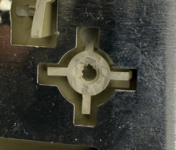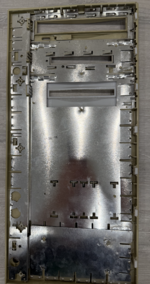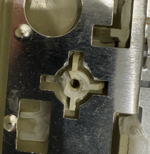FELLAS, I NEED YOUR HELP
Alright, so one of the two SATA data cables I ordered has arrived. I know it's quite long and it looks humorous at this length, but I think this was the shortest they had available.
View attachment 19638
aaaaand.... I get a kernel panic
View attachment 19639
Here is what the kernel panic log shows in case anyone want sot make any sense of it:
View attachment 19640
Unplugged everything. Took it apart. Checked to see if the cable is plugged in all the way even though I really shouldn't need to be doing this. Is it plugged in to the drive? Yep. Plugged in to the motherboard? Yep.
View attachment 19642View attachment 19641
Turn it on. The SSD still doesn't exist.
View attachment 19643
I went and got the black cable with the latches from my earlier post.
View attachment 19644
The SSD still doesn't exist.
View attachment 19645
I take out the cable and just plug in the SSD using the upper drive bay's power and data cables to force the PowerMac to boot into Sorbet Leopard which is cloned to the SSD using Carbon Copy Cloner as you saw in Part 3.
View attachment 19646
And that just leaves the computer on a blank screen with no Apple logo ...
indefinitely... with the fans on full blast.
View attachment 19647
FELLAS, I NEED YOUR HELP
I'm throwing in the towel and tapping all of you into the ring. Just in case it wasn't clear what I am trying to do, here is a quick summary of my predicament and a run down of my goals:
1. The SATA data cable for the bottom drive bay is out of commission
2. I have used two cables in its place with no success
3. I want to use my Mercury Electra 3G 500GB SSD as a bootable drive with 10.5.9 "Sorbet Leopard" installed
4. The drive is recognized by the system and seen by Disk Utility only when plugged in via an external USB enclosure thus far
5. Plugging the drive into the system using the top bay's cables results in nothing booting even after cloning 10.5.9 "Sorbet Leopard" to it
I chose this SSD because of the testimonies of multiple people across various Mac forums claiming that it's basically a guarantee to work with any PowerPC Mac with a SATA connection, but I'm having the exact opposite experience with all of my troubleshooting.
I noticed that my predicament is practically exactly the same as this individual I discovered on the 68kMLA forums here:
https://68kmla.org/bb/index.php?threads/powermac-g5-wont-recognize-sata-drive.31488/. I suggest reading the short thread. The individual just ended up using a hard drive instead, which is not what I want after all this time, especially considering there originally WAS a hard drive in the second drive bay that got both it and the data cable demolished once unplugged, suggesting that it was forcefully connected or something I cannot explain. I'd like to be rewarded with a usable SSD after all this hassle. Any working solutions are appreciated.



